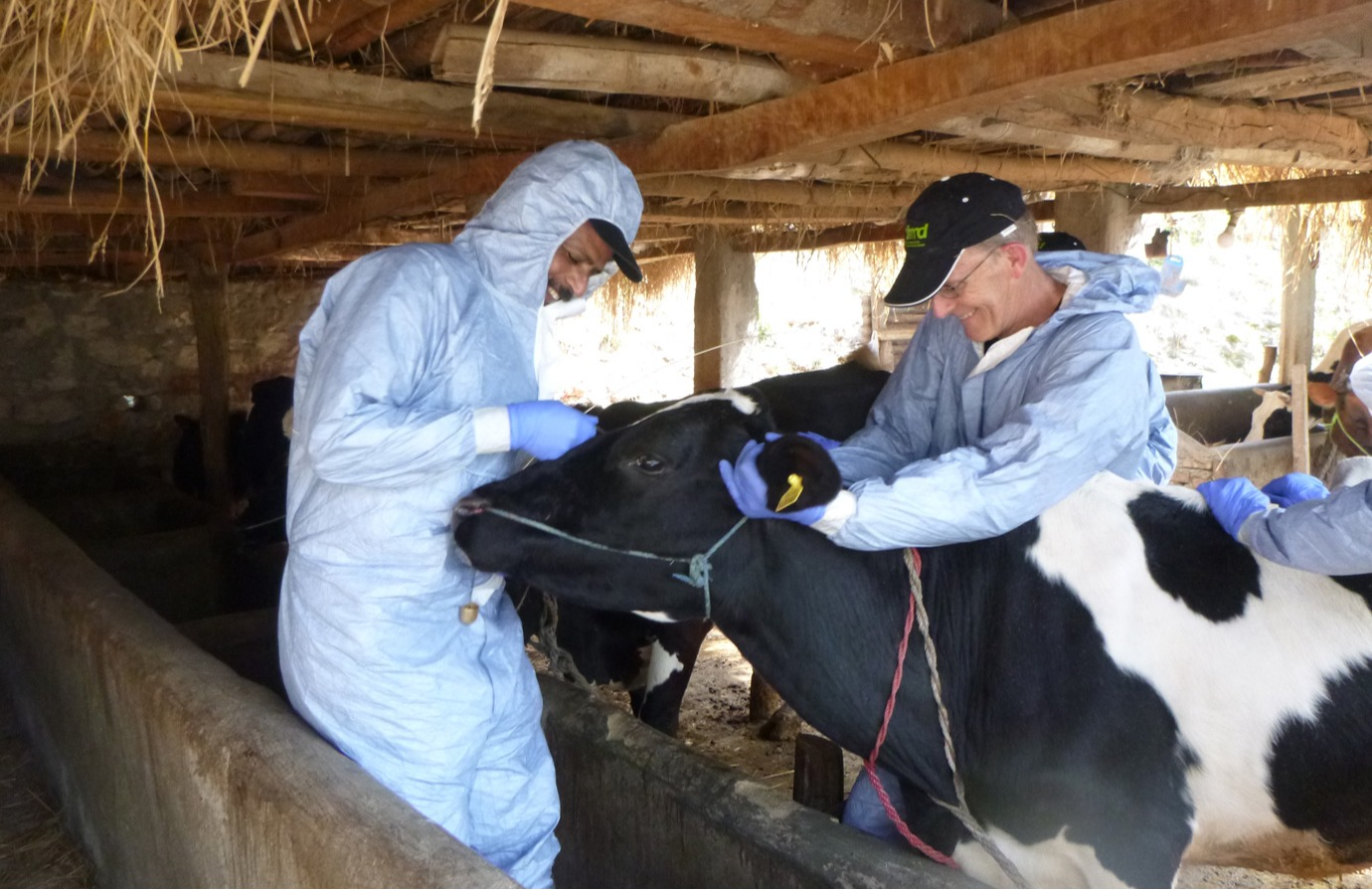Foot-and-mouth disease (FMD) is a highly contagious viral disease affecting cloven-hoofed animals like cattle, pigs, sheep, goats, and various wild species. Characterized by fever, blisters, and lameness, it causes significant morbidity but low mortality in adults. FMD poses serious global economic and social challenges, impacting agricultural productivity, food security, and trade.
Recent outbreaks have led to substantial economic losses, reduced milk and meat production, and extensive control measures such as culling and movement restrictions. These actions disrupt livestock markets and trade, heavily affecting rural communities reliant on livestock.
FMD strains livestock businesses and international trade due to strict import and export controls. The economic burden includes outbreak management, vaccination, and biosecurity measures. While FMD is not zoonotic, its impact on livestock can cause food shortages and higher prices, especially in regions dependent on animal products. Robust control and prevention strategies are essential to mitigate these impacts.

Featured publication
The Progressive Control Pathway for Foot and Mouth Disease control (PCP-FMD). Principles, Stage Descriptions and Standards
The Progressive Control Pathway for Foot and Mouth Disease (PCP-FMD) was developed by the FAO and the European Commission for the Control of Foot-and-Mouth Disease (EuFMD) to help FMD-endemic countries reduce the disease's impact and virus load.
Adopted by FAO and the World Organisation for Animal Health (WOAH) as a tool for designing FMD control programs, PCP-FMD is central to the FAO-WOAH Global FMD Control Strategy. It consists of stages that identify and address FMD risks, aiming for countries to achieve WOAH recognition of FMD-free status.
See also

Tool
PCP-FMD dashboard
News

news
Regional collaboration for transboundary animal diseases control and trade in Africa
African leaders in the animal resource sector recently convened to address animal health challenges that impede the prevention and control of priority transboundary and zoonotic diseases.

news
Marking two decades of multilateral efforts in transboundary animal disease control
On 24 May, we commemorate the 20th anniversary of GF-TADs and the significant milestones achieved in enhancing animal diseases surveillance and reporting mechanisms.
How FAO supports
FAO plays a critical role in combating FMD through various initiatives focused on surveillance, prevention, and control. A primary focus is the implementation of the Global FMD Control Strategy, where FAO collaborates with the World Organisation for Animal Health (WOAH) through the Global Framework for Transboundary Animal Diseases (GF-TADs).
FAO also supports vaccination and prevention efforts by facilitating the procurement and distribution of vaccines and promoting biosecurity measures to control FMD spread. It also provides guidance on best practices for livestock management and disease prevention to help mitigate risks.
Capacity building is another cornerstone of FAO’s approach. It offers training programs for veterinary services to enhance their diagnostic and response capabilities. It also strengthens laboratory networks to improve the ability to diagnose FMD and respond to outbreaks promptly and effectively.
Coordination and policy development are integral to FAO’s strategy. By working closely with international and regional organizations, such as WOAH and the European Commission for the Control of Foot-and-Mouth Disease (EuFMD), it supports the implementation of comprehensive control strategies. FAO also assists in formulating policies and advocates for measures that ensure food security and economic stability.
In times of FMD outbreaks, FAO provides crucial emergency response support, including technical assistance and resource mobilization for affected countries. This support is key to effective emergency preparedness and management.
Did you know?
⦿ FMD is caused by several serotypes of the aphthovirus (O, A, C, SAT 1, SAT 2, and SAT 3), each requiring different vaccines.
⦿ It affects animals but is not zoonotic, meaning it rarely infects humans.
⦿ The disease spreads quickly within and between regions due to its high transmissibility and environmental persistence.
⦿ FMD is prevalent in parts of Africa, Asia, the Middle East, and South America.
⦿ Control measures include vaccination, biosecurity, and sometimes culling and movement restrictions.
Introduction to Foot-and-Mouth Disease

This course covers the recognition of FMD in both FMD-free and endemic countries, detailing clinical signs, transmission routes, and measures for diagnosis, control, and prevention.
Related links
Early warning and disease intelligence
Biosecurity in terrestrial animal value chains
Emergency Prevention System for Animal Health (EMPRES-AH)
FAO Emergency Centre for Transboundary Animal Diseases (ECTAD)
Global Framework for the Progressive Control of Transboundary Animal Diseases (GF-TADs)
The European Commission for the Control of Foot-and-Mouth Disease (EuFMD)
